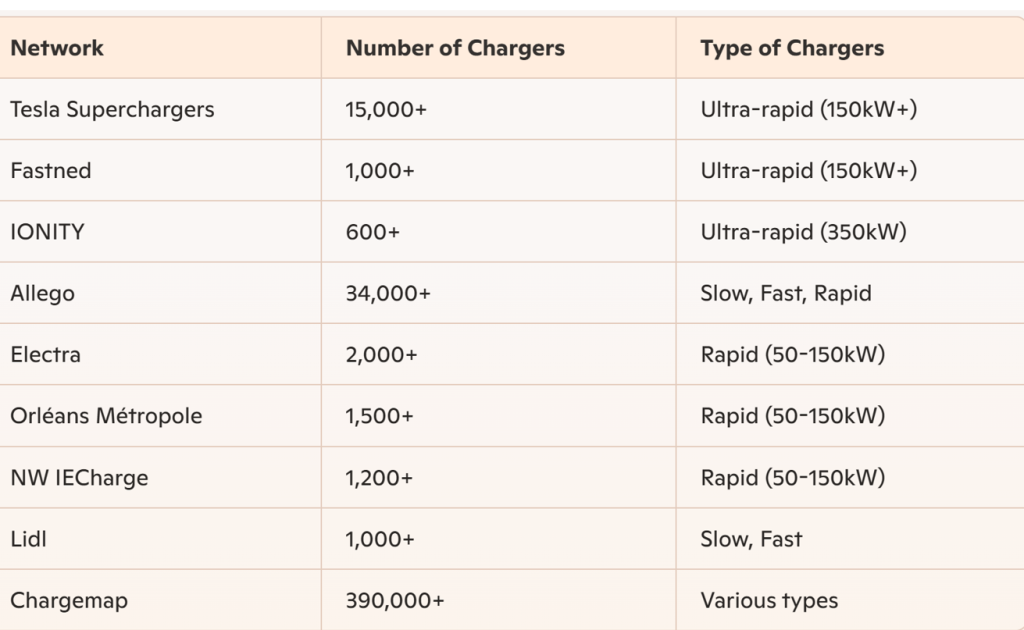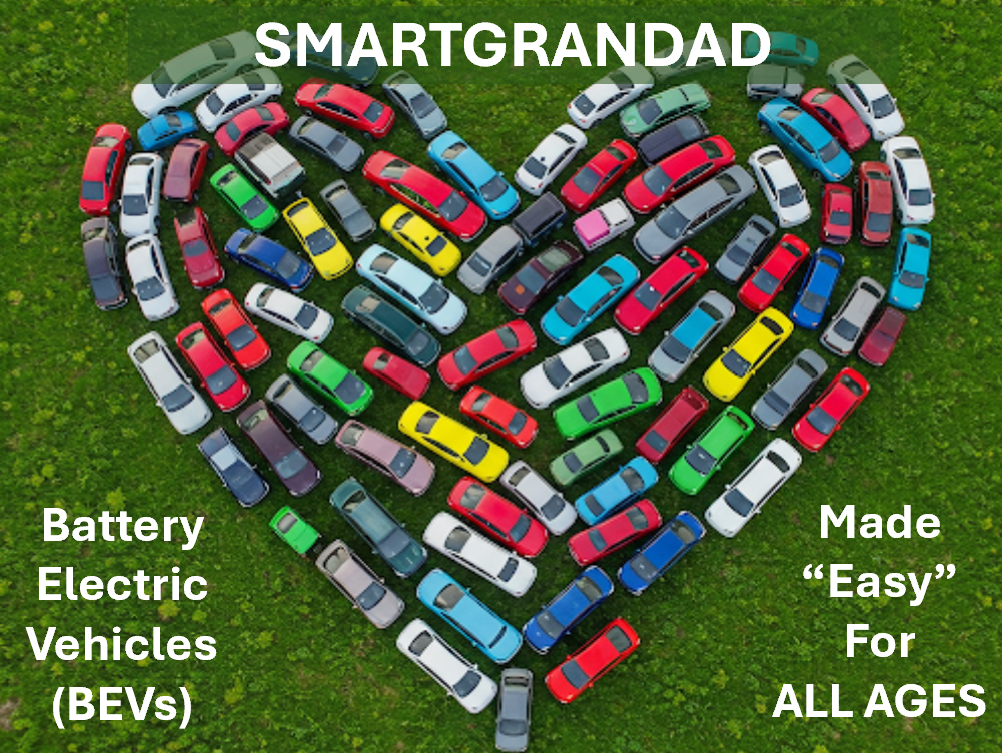SmartGrandad - THE "REAL" CAUSE OF SLOW EV ADOPTION
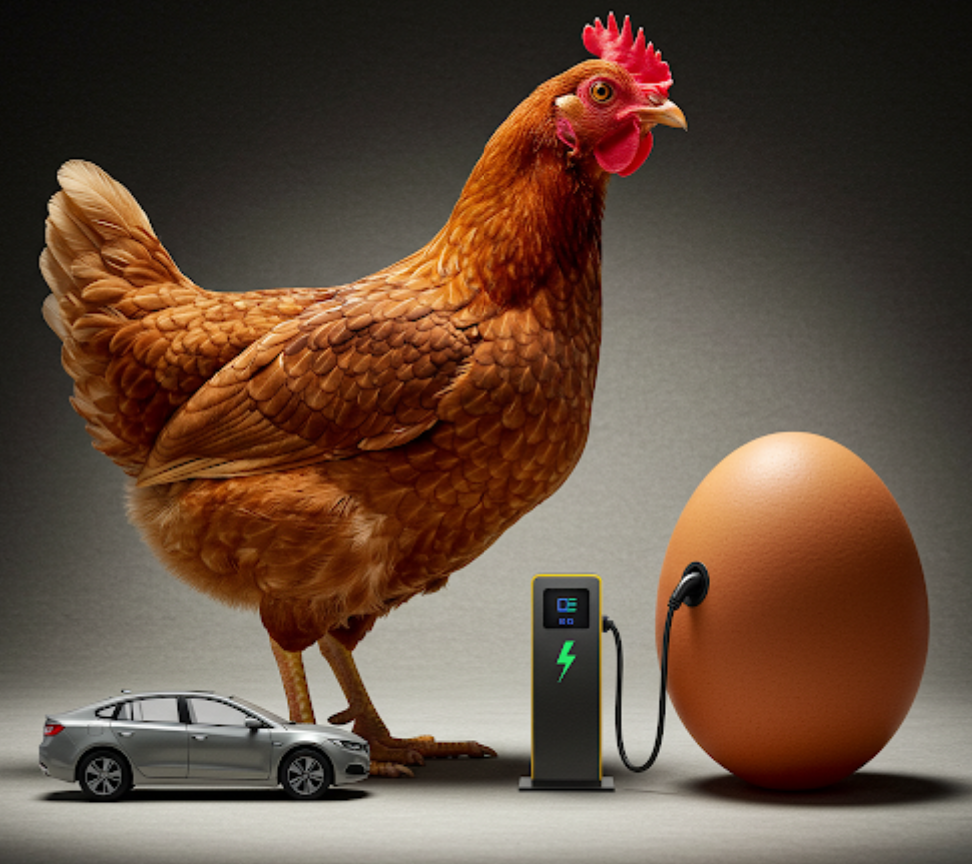
Which Comes 1st? EV or EV Charger?
Tesla Approach:
From Day One Tesla (Elon Musk) realised that if you are first to start selling Electric cars, there must be somewhere for owners to charge them. So, when the 1st Tesla Roadster was sold in 2008, in addition to supporting Home Charging, Tesla Charging Sites were a key part of the launch
Reasoning that it would not be a good idea to rely on FOSSIL fuel station owners to fix this, as they have a vested interest in keeping FOSSIL fuels flowing and not making it easy for the “New Kid on the Block” ELECTRIC VEHICLES to succeed.
So before starting volume production of EV’s TESLA focussed on establishing the Tesla Charging sites and installing a sufficient number of RAPID chargers that worked reliably and where easy for the consumer to use. In 2025 Tesla now has over 30,000+ (60%) of rapid chargers in the US, 2000+ in the Uk, plus 15000+ in Europe and an availability of over 95%!
Non Tesla Approach:
But it seems that the traditional car manufacturers (VW, Daimler Benz, BMW, FORD, etc.) prioritised “MAKING THE TOYS”, i.e. the EVs. Belatedly, they tried to establish multi manufacturer EV Charger networks, the reality was that no one “Held the Reins” and the roll out and the monitoring, support & maintenance of the EV Chargers was/is scattered /un-coordinated.

“Chillingly” Successful EV Adoption
Given all the stories about range and how the cold kills the battery, strange that Norway is the country with the Fastest adoption of all new cars being electric!! Sales in 2024 having reached over 90% being electric. Even though the cold can reduce battery power by -20%, it does not matter as they have sufficient reliable charger network.
Simply Norway’s government prioritised subsidies for EV buyers and ensuring a reliable EV charging network.
In this article, I give my view on what has held back the adoption of EVs;
- Chicken or Egg? (EVs or EV Chargers 1st?)
- Current State of EV Adoption
- Lack of Quality EVs Holding EV Consumers Back?
- Lack of Available Reliable EV Chargers Holding EV Consumers Back?
- Conclusion
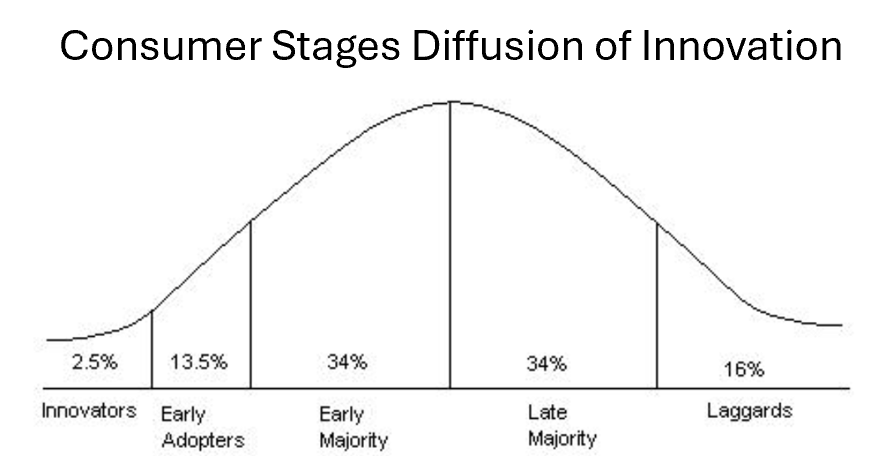
Todays Stage of EV Adoption?
Diffusion of Innovation Framework
EV adoption generally is taking longer to reach the “Tipping Point” than many hoped. Take a look (below) at the “Diffusion of Innovation Framework” created in 1962 which lists the 5 Stages of Consumer Adoption of new technologies.
- Innovators (2.5%)
- Early Adopters (13.5%)
- Early Majority (34%)
- Late Majority (34%)
- Laggards (16%)
Stage 1 & 2 Complete:
Since 2017, the consumers groups The Innovators(2.5%) and Early Adopters(13.5%) have accepted the challenges of being in the front line of Innovation. Studies show that only 1% of EV owners, say they would go back to a ICE car.
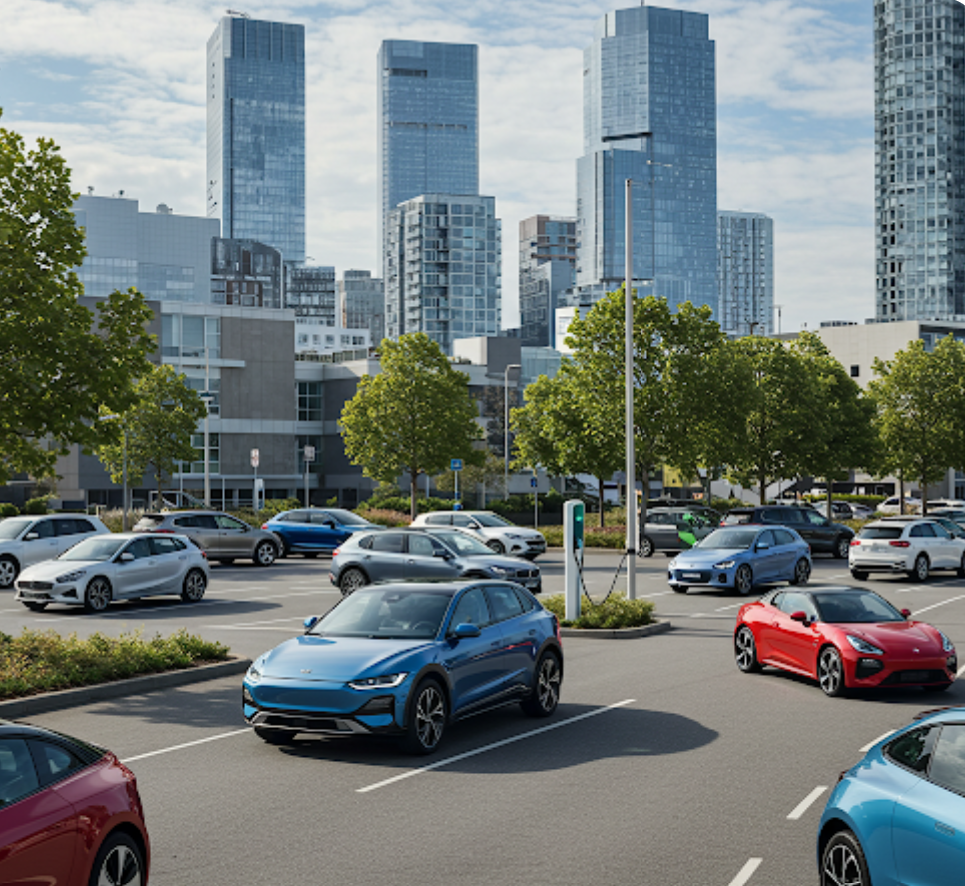
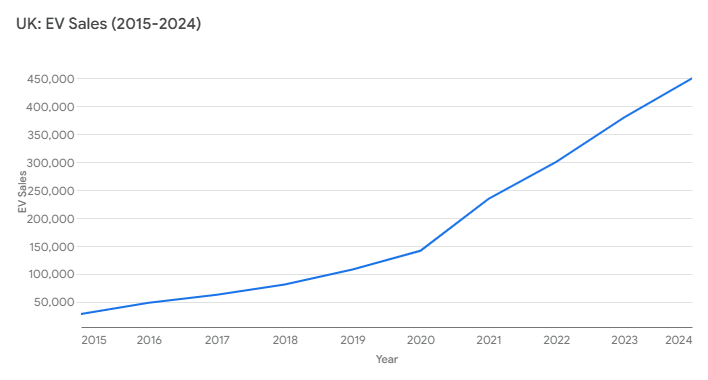
Lack of Quality EVs Holding EV Consumers Back?
Stage 3 Early Majority:
Now its time for the Early Majority(34%) to be convinced, but these are the people who deliberate and don’t like to take large risks. Therefore, the EV industry as a whole must remove any fears that the “Normal” buyers might have. but have they done that?
Lets look at some areas that suggest that ;
Lack of Quality EVs is NOT the problem.
Capability of EVs: With over 50 EV manufacturers offering many EV models for different types of usage profiles, range, charging speeds, there is no lack of choice of good quality EVs. Naturally, some better than others, but that’s the same for ICE cars.
Price: Becoming less of an issue as previously manufacturers focused on the high end models, with all the “Bells & Whistles”. Now ,we are seeing a lot of regular and lower end EVs from the likes of Dacia, Renault, Kia, Hyundai , MG plus the Chinese players BYD, etc.
Servicing and Maintenance is generally sorted as most manufacturers have established dealer networks, this is very low risk. Plus EVs need only a smaller and much less costly servicing as there are no Fossil fluids the change.
Yes, there are still more improvements in battery technology to come, but for normal consumers, the EVs that we buy today, will still be working in 10, 15 or 20 years time. No difference to todays ICE cars.

Lack of Available Reliable EV Chargers Holding EV Consumers Back?
The Problem IS the EV Charging Infrastructure
We have all heard of Electrify America and the pathetic EV Charger rollout in the US and also many EV Charger networks issues in the Uk. and Europe.
So is it any wonder that Early Majority Consumers who “Deliberate, adopt new ideas just before the average person.” are not comfortable to dive right in. However, with this group onboard, there will be over 50% adoption and the game will be finally over for ICE cars.
What are the main Problems with Non-Tesla EV Chargers?
Implementation: Compared to Tesla, what we have for non-Teslas is an un-coordinated Roll Out with NO Targets, No Rules and No one following up. Leaving it to individual providers, some backed by FOSSIL giants and many not, it is not surprising that many have “Cherry Picked” profitable sites and neglected Quieter areas and Reliability issues.
Little Standardisation: There is to little reliability in the networks and drivers face an overwhelming array of app user interfaces and too few chargers that accept a standard Debit / Credit payment cards. Fortunately the EU (inc UK.) has now mandated that Payment Card Readers are installed on all new installations.
Poor Reliability: With todays technology, most networks will be using RMM (Remote Monitoring and Management) tools & software to identify when a charger is not working . However, monitoring is one thing, but many operators choose not to react immediately to issues, leaving some chargers un-useable for days/ weeks.
Too Few Charging Stations Too Far Apart: In the 5 years that I have had BEV cars the availability of chargers has improved significantly. On Motorways you can now be confident that there will be EV Rapid Chargers available at Service Stations, etc.
I understand that Charging Networks want to focus on maximising investment by choosing busy sites where they can charge more per KW, but many people do journeys on major roads that are not motorways and we need Rapid Chargers to be Available at least at 20 mile intervals. What would a fossil fuel user say if you could only get 1 litre of fuel every 5 minutes.
How come that Tesla, who remember 10 years ago, hardly sold any cars, has managed to establish a wide spread network with reasonable prices. In many situations, Tesla Chargers have become the “Fallback” option when other providers don’t cover areas of the country.
Inconsistent Facilities: When we go to a ICE Fuel station, you are pretty certain that there will be somewhere to Pay, someone to ask questions and get help, a shop, maybe a cafe /restaurant and toilets.
Compare this to EV Charging Sites and it is a a very mixed bag. In my experience there are many sites that have nothing, no shop, no cafe, no toilets and especially no one to ask for help. When its night time and you sit in your car unable even to use a toilet it is not a good experience!
EV Chargers not working: Things are improving and at Motorway Service stations it seems that faults are fixed fairly quickly.
However there are far too many situations were the more local 1/2 charger setup is totally out of order and it seems to take days/weeks before anyone fixes it. Looking at Shell ReCharge and BP Pulse these seem to be the biggest offenders.
So why are so many chargers unavailable for so long? Could it be that Fossil backed Charging companies are not interested in supporting customers desires to move to cleaner more cost effective EVs?
Support Unable to Pay/ Help: You need help as the charger is not working. My experience at an MFG charger in Uk. was that you ring the number on the charger and typical responses are 1. I cannot connect to the charger, 2. I try a re-boot, 3.Can you try from App, (if you are a visitor) the MFG app is not available on your App or Pay store 4 Use a credit card, same again your foreign credit card is not accepted. 5. Last option, go into the Esso station and ask the counter staff for help, “Those chargers are nothing to do with us”. This 2025, talk about a 2ndclass service for EV consumers!!!
EV Charger Apps: No doubt this will reduce in future but for now each charger network has its own app so you end up collecting loads of apps on your phone. Yes, there are some apps that you can use on many charging networks, but what should you choose.
Payment Cards not Accepted: Go to any Fossil fuel station anywhere and even if you are a non-resident you will be able to use your Credit / DEbit card. With EV Chargers not many have payment card terminals and those that do do not always accept foreign cards. Has anyone EVER had that problem at a Fossil station!!
So, How Come none of these things happen at Fossil Fuel Station? At New Charing companies maybe they are very immature and have not the competence to manage the processes. But at traditional FOSSIL companies, Shell, BP, ESSO this is poor anit EV strategy, to offer a 2nd class service and retain their ICE car customers.
Price: Fossil fuel stations are very price competative and it prices are almost uniform not matter who the provider is. With EV Rapid Chargers there can be a massive price difference. In the same area at TESLA you might pay 4.8 pence per KW, whereas at Gridserve 8.8 pence per KW. This can make the difference of a 5KW charge at Tesla £24 and Gridserve £44 (+183%). With signingfor FOSSIL fuels and NOT mandatory for Electricity how can customers see they they have much better options.
I guess ICE car owners would would be pretty annoyed. They would think that there is either a strike or that there is some sort of shortage. As an ICE car owner for 40+ years I would say that I have never being to a Fossil Station where it did not work or I could not pay with a card.
Compare this to Fossil Fuels stations and its no wonder that Early Majority EV Buyers might think twice about an EV
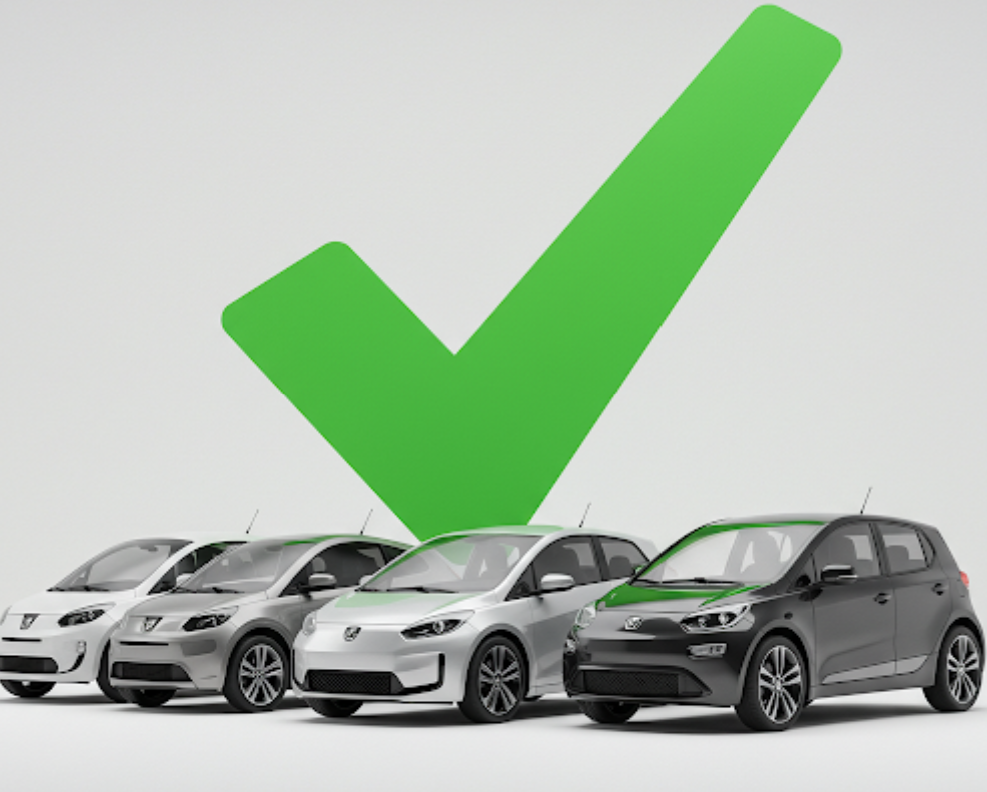
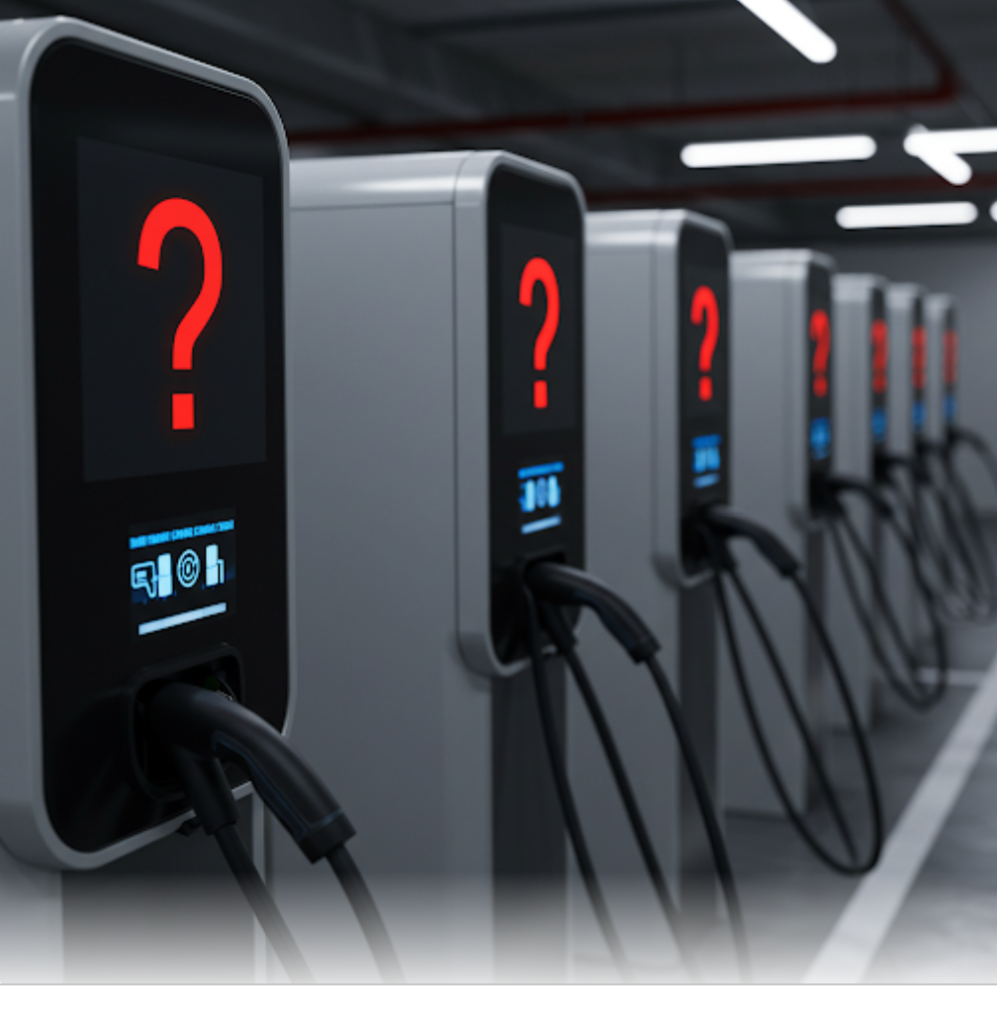
Conclusion:
EV manufacturers have delivered “Reasonably Well”,
EV Charging Networks “Can Do Much Better”
In my view, Todays, slow adoption of EVs in the US, Europe and Uk. is down to the manufacturers & governments not focusing attention onto the EV Charging Networks.
Some EV networks (like Ionity) have delivered on the reliability, but even for them accessibility varies greatly country by country.
Governments have also failed to ensure common standards and practices which has lead to too little availability and poor reliability
Which the FOSSIL giants keep raking in the money for a few more years instead of ensuring that their EV sites match their normal service levels
If you agree or don’t agree it would be great to see you comments in the feedback section below.
The Diffusion of Innovation – 5 Stages of Consumer Adoption
This framework, known as the Diffusion of Innovations theory, was developed by Everett M. Rogers in his 1962 book of the same name.
Innovators:
- Characteristics: Venturesome, risk-tolerant, eager to try new ideas.
- Percentage: 2.5% of the population
- Role: Experiment with and refine the technology.
Early Adopters:
- Characteristics: Opinion leaders, respected by peers, adopt new ideas early but carefully.
- Percentage: 13.5% of the population
- Role: Spread the word about the technology’s value.
Early Majority:
- Characteristics: Deliberate, adopt new ideas just before the average person.
- Percentage: 34% of the population
- Role: Drive market penetration and make the technology mainstream.
Late Majority:
- Characteristics: Skeptical, adopt new ideas only after the majority has already done so.
- Percentage: 34% of the population
- Role: Contribute to the stability and profitability of the technology.
Laggards:
- Characteristics: Tradition-bound, resistant to change, adopt new ideas only when they are no longer innovative.
- Percentage: 16% of the population
- Role: May never adopt the technology.
Summary of EV Charger Numbers (US, UK. & Europe) (end 2023)
US
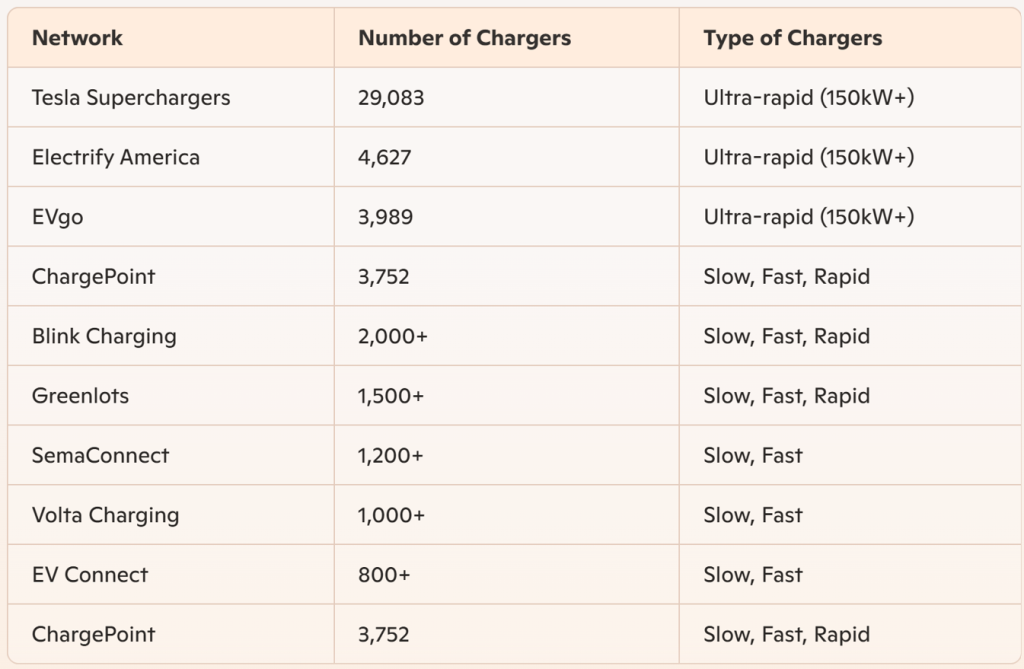
United Kingdom
As of January 2024, the UK had 73,699 public electric vehicle (EV) charging devices. This includes:
- 7,021 ultra-rapid chargers (150kW+)
- 14,000 fast chargers (50kW)
- 12,000 destination chargers (e.g., at restaurants, hotels)

- Europe
- In Europe, the number of EV chargers is also growing rapidly. As of mid-2024, there were approximately 300,000 public EV charging points across the continent2. This includes various types of chargers, from slow to ultra-rapid
